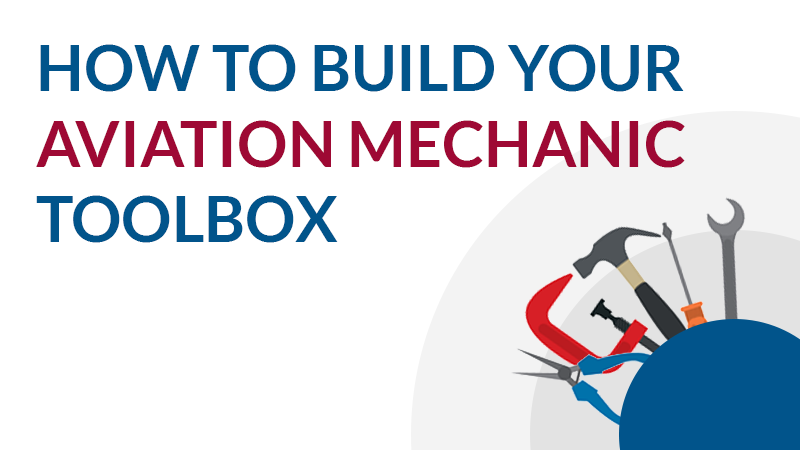
Everyone’s been in the same place you are right now… you want to work as an aviation mechanic but most of the jobs say “tools required.” Here are a few tips to help you build your aviation tool box so you can apply for those jobs and feel confident that you are arriving with the right tools in your tool box.
General Tools In Every Aviation Tool Box
The first priority in building your tool box is to stock it with reliable tools used everywhere. This includes quality tools such as:
-
Ratchet and socket set
-
Screwdrivers
-
Wrenches and hex wrenches
-
Wire cutters
You won’t go wrong with brands such as SnapOn,or Kipper. Always check to make sure that the tool you are purchasing is allowed on an aircraft. If it’s not, don’t put it in the tool box you take on a job site.
Some employers provide a list of required tools. However, it may be out of date. Check with your recruiter if you have any questions about what tools you need to bring with you for a specific job.
Once you start working at a job, you will get a feel for what tools you might want to add to your tool box. Many employers have representatives from manufacturers like SnapOn who will visit your job site and help you select any specialty tools you need and some manufacturers have a savings program for buying tools.
Tools That Make Your Job Easier
For the aviation mechanic, you may want to add a few tools that simply make your job easier of faster, such as:
-
Safety wire pliers
-
Sheetmetal snips
-
Ratcheting screwdriver
-
Speed handle
-
Air drill or cordless drill
-
Vise (with a non-marring jaw insert)
Storing Your Tools in a Toolbox
Purchasing your toolbox is the biggest expense up front when you are building your toolbox. The amount of tools you need to carry with you and how mobile you need to be with your tools will have an impact on what kind of toolbox you need.
If you have more tools than you can carry, you will need a large toolbox on wheels. Keep in mind the type of surface you will be rolling your toolbox over so you get the wheels that make moving around easy. You don’t want little wheels made for staying inside a hangar when you will actually be rolling it from hangar to hangar across asphalt.
If you are just starting out, you can probably get away with a hand-held toolbox. Choose a toolbox that holds all of your tools and still has a little bit of extra space to grow.
If you aren’t sure what tools you need for a job that you are looking at on the Strom Aviation website, call your recruiter and they will give you the details you need to make solid purchasing decisions for your aviation tool box.